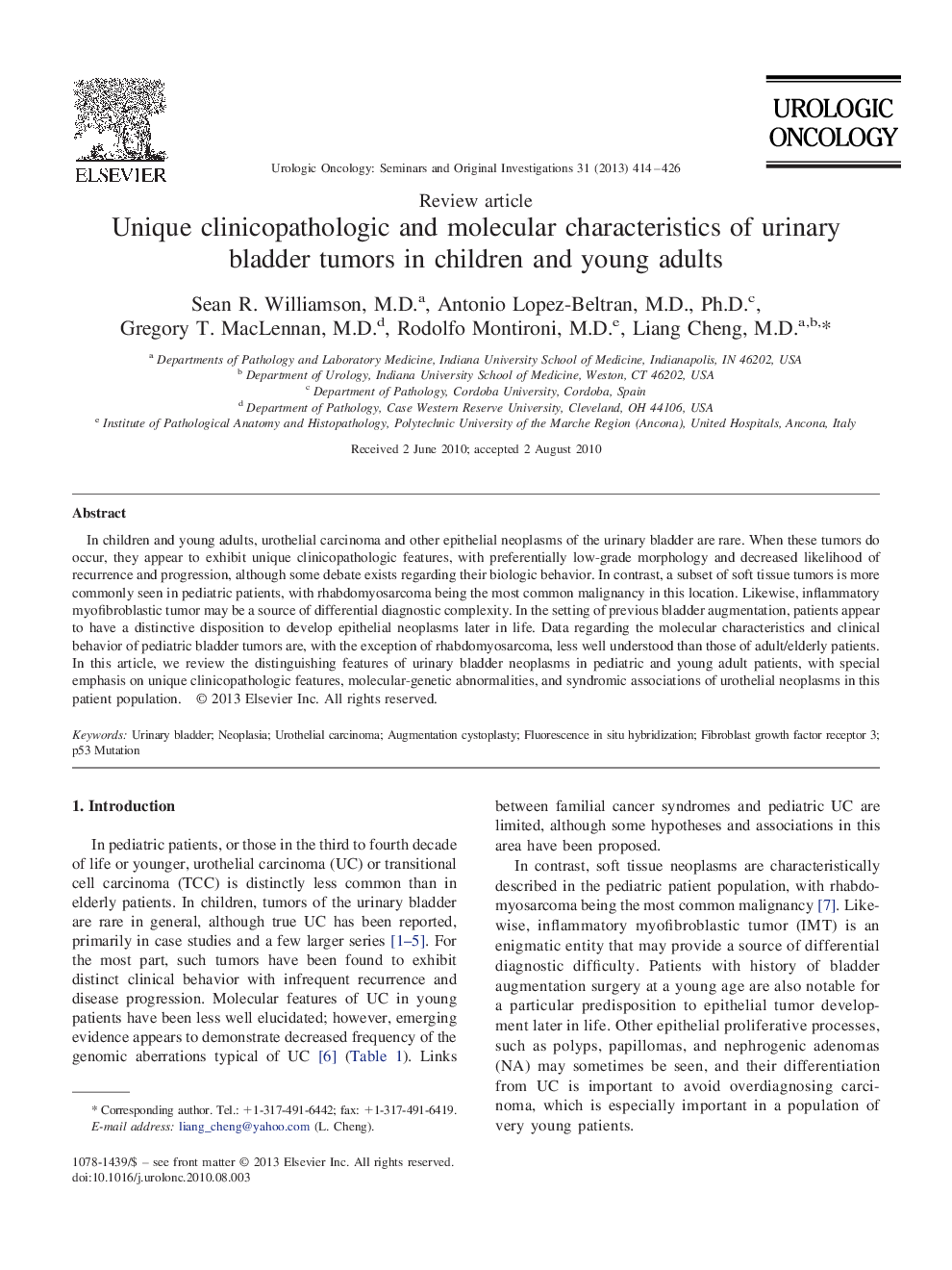| Article ID | Journal | Published Year | Pages | File Type |
|---|---|---|---|---|
| 4000098 | Urologic Oncology: Seminars and Original Investigations | 2013 | 13 Pages |
Abstract
In children and young adults, urothelial carcinoma and other epithelial neoplasms of the urinary bladder are rare. When these tumors do occur, they appear to exhibit unique clinicopathologic features, with preferentially low-grade morphology and decreased likelihood of recurrence and progression, although some debate exists regarding their biologic behavior. In contrast, a subset of soft tissue tumors is more commonly seen in pediatric patients, with rhabdomyosarcoma being the most common malignancy in this location. Likewise, inflammatory myofibroblastic tumor may be a source of differential diagnostic complexity. In the setting of previous bladder augmentation, patients appear to have a distinctive disposition to develop epithelial neoplasms later in life. Data regarding the molecular characteristics and clinical behavior of pediatric bladder tumors are, with the exception of rhabdomyosarcoma, less well understood than those of adult/elderly patients. In this article, we review the distinguishing features of urinary bladder neoplasms in pediatric and young adult patients, with special emphasis on unique clinicopathologic features, molecular-genetic abnormalities, and syndromic associations of urothelial neoplasms in this patient population.
Keywords
Related Topics
Health Sciences
Medicine and Dentistry
Oncology
Authors
Sean R. M.D., Antonio M.D., Ph.D., Gregory T. M.D., Rodolfo M.D., Liang M.D.,
